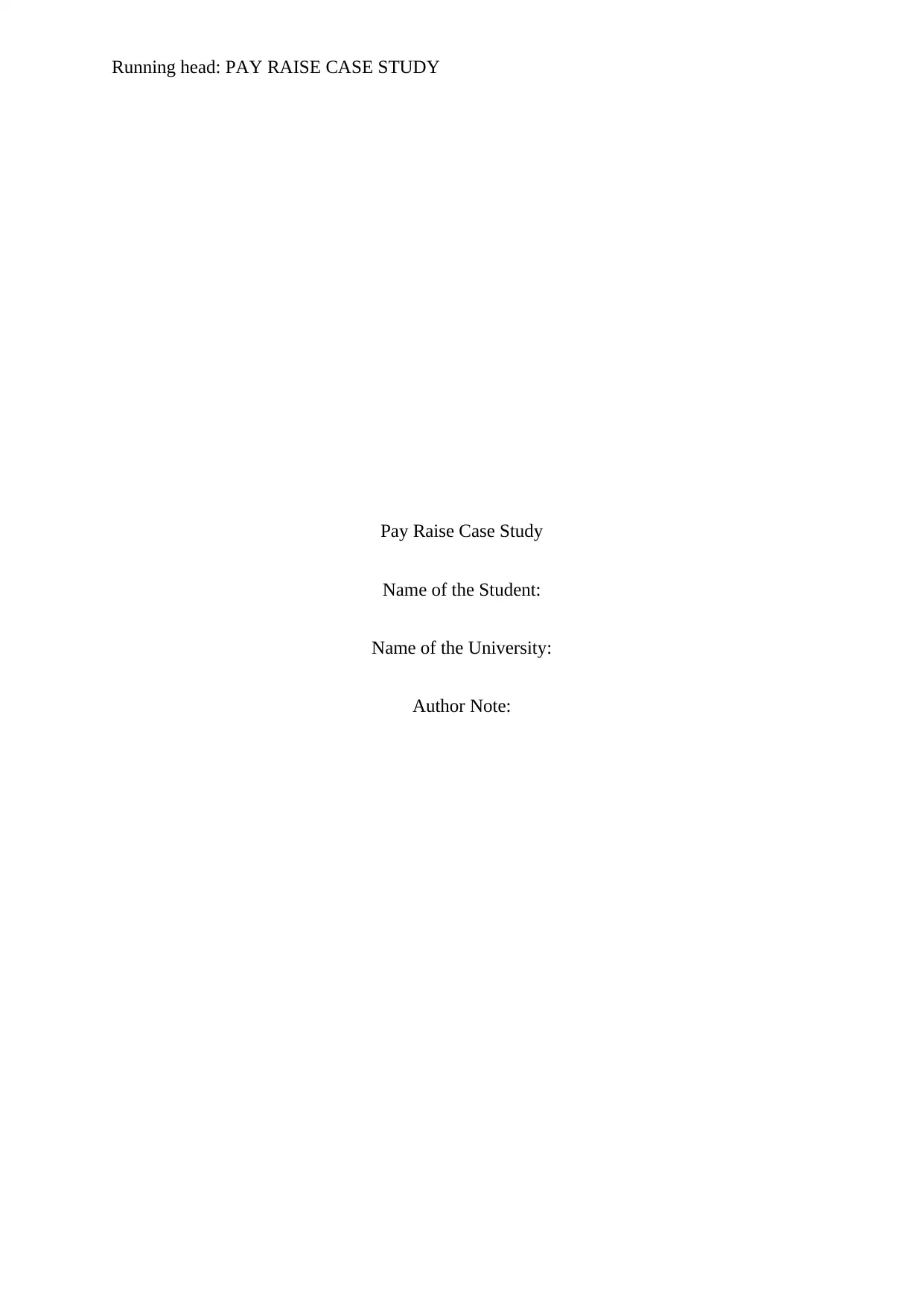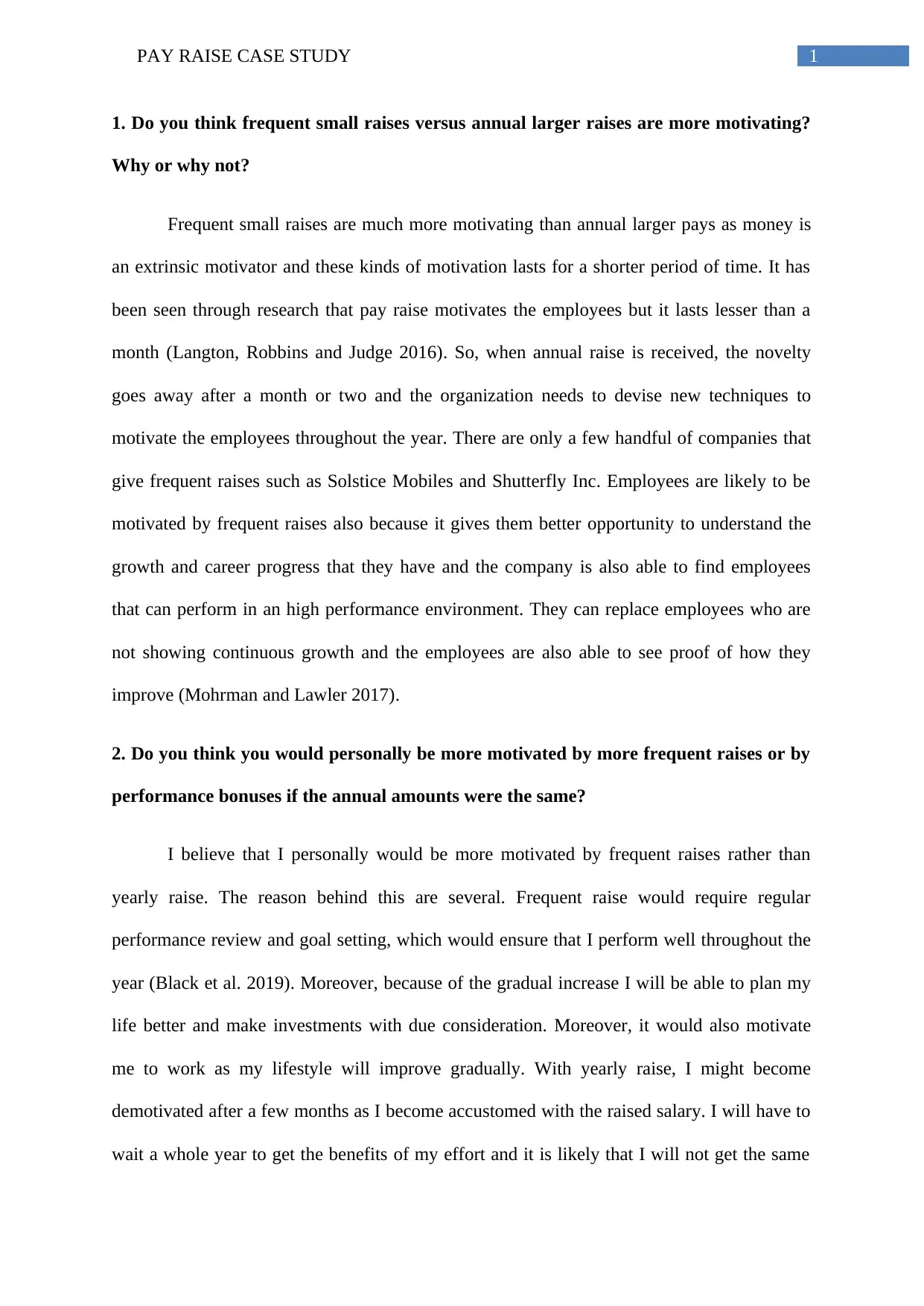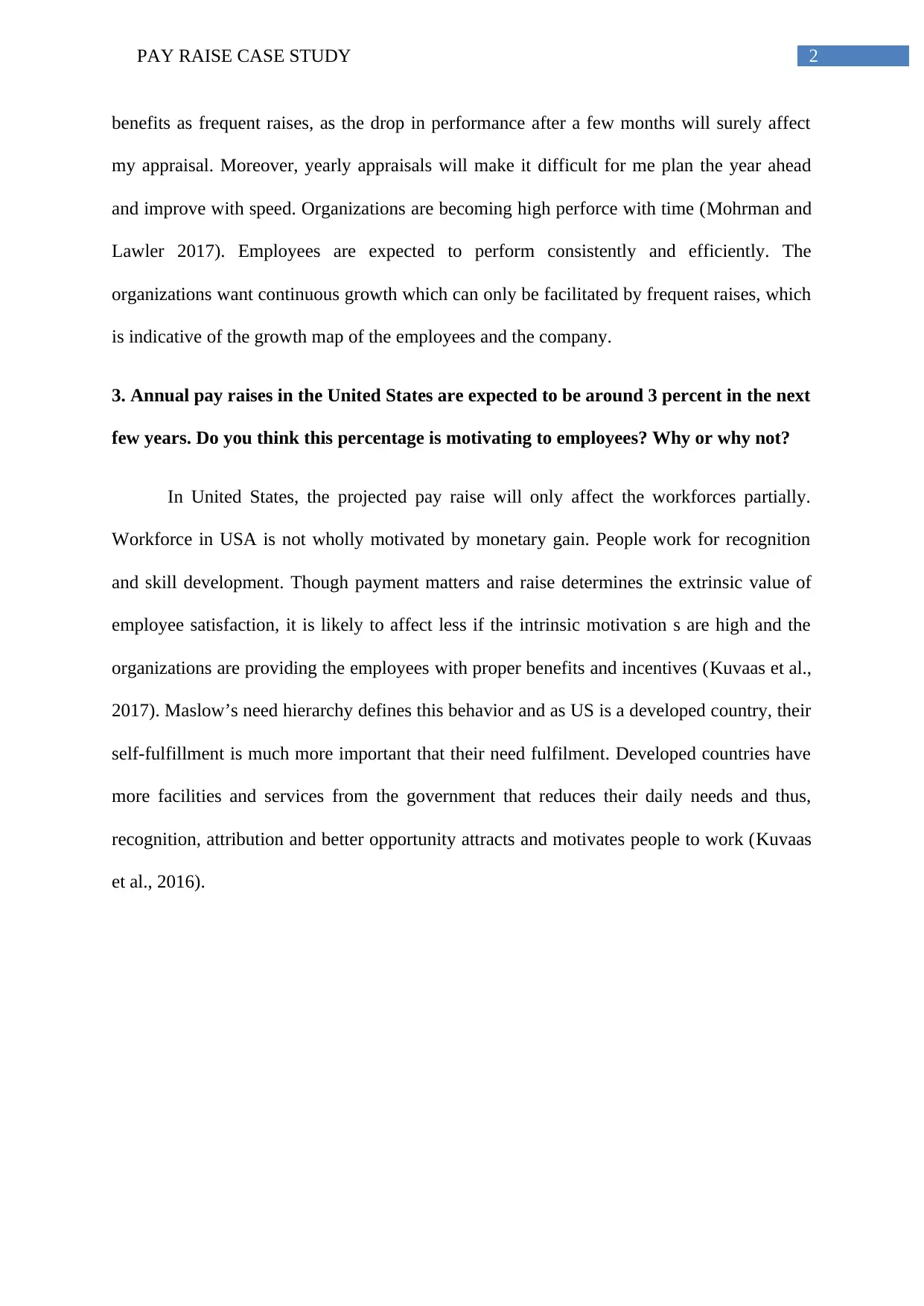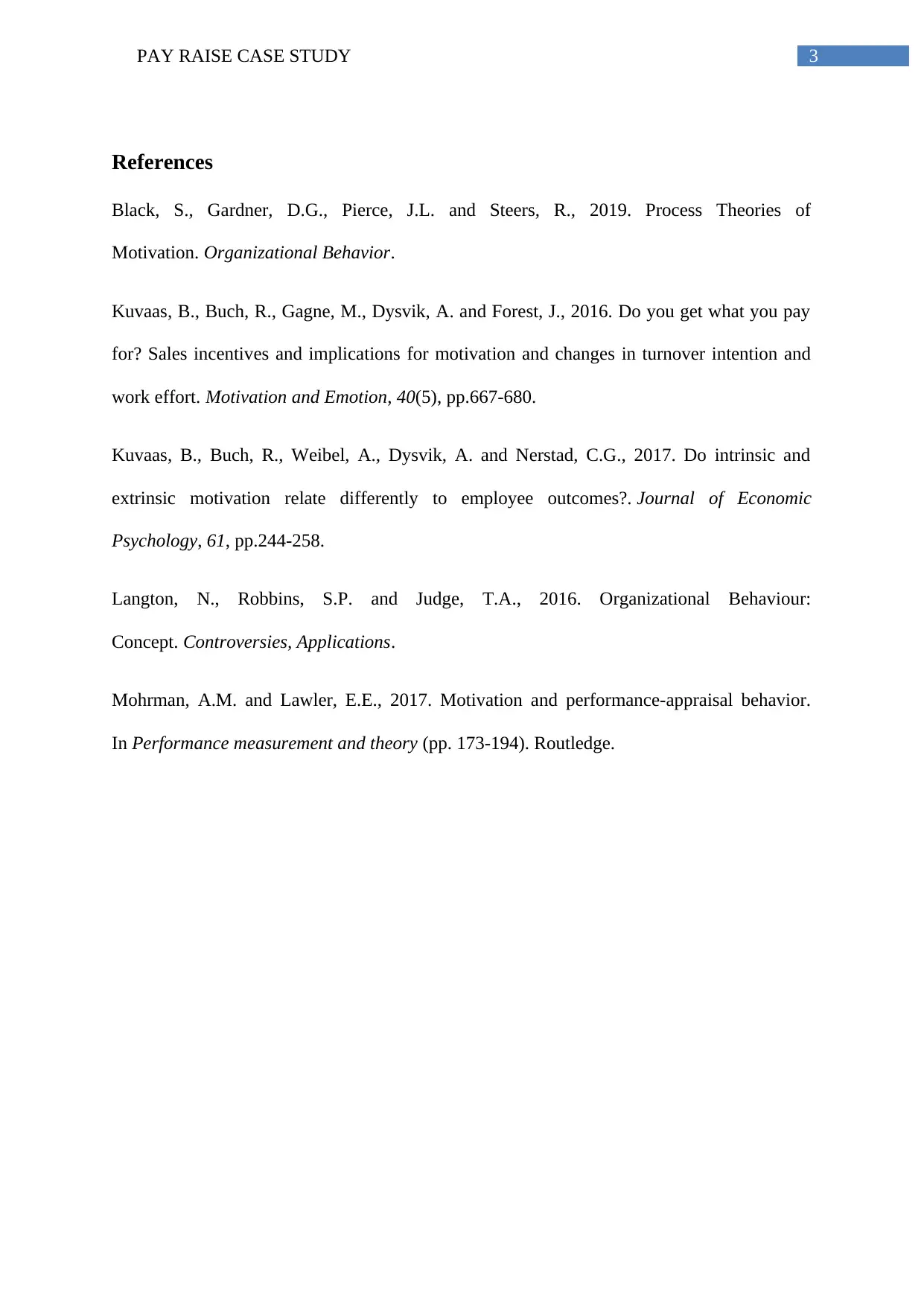MG630 - Organizational Behavior: Pay Raise Case Study Analysis
VerifiedAdded on 2022/08/13
|4
|853
|20
Case Study
AI Summary
This case study analyzes the impact of different pay raise strategies on employee motivation, drawing from the principles of organizational behavior. The student explores the effectiveness of frequent small raises versus annual larger raises, arguing that the former is more motivating due to the nature of extrinsic motivation and the opportunity for continuous performance evaluation and career growth. The analysis also considers the student's personal preferences, favoring frequent raises for better financial planning and sustained motivation. Finally, the case study examines the motivating potential of a 3% annual pay raise in the United States, concluding that it may only partially affect employees, as factors beyond monetary gain, such as recognition and skill development, play a crucial role, especially in developed countries. The student references relevant research to support their arguments.
1 out of 4











![[object Object]](/_next/static/media/star-bottom.7253800d.svg)